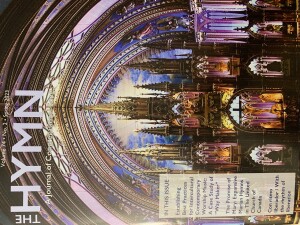Chants
Here are some tunes and a link or two from the Singing Our Way Home Retreat I led for Holy Cross Monastery on Zoom during the COVID-19 pandemic: Singing our Way Home Retreat 4/28-30/2020.
Take a look, sing through them, and see which ones stick with you. If you’d like to share the tunes in the wider community, please ask permission from the composers. If you can’t find them, ask me: ana@anahernandez.org Blessings and stay safe.
Welcome to the the world of chanting as a spiritual practice. Click the links below to hear and learn audio clips of the chants found in The Sacred Art Of Chant: Preparing to Practice. All descriptions come from that book, so check it out! Thanks to Ruth Cunningham for recording these with me. Lift up your voice, open your mind and heart, and experience the ways chanting can enrich your spiritual life.
Chakra Bija Mantra:
Bija means “seed” in Sanskrit. Sanskrit contains many seed syllables. The purpose of the chakra bija mantra is to move energy up the spine and to keep track of what’s going on in your body. The bijas are a way to manifest the you in you.
Kosi R’vaya:
A chant by rabbi Shefa Gold which means “my cup overflows.” The text is from the 23rd Psalm.
Kuan Yin Mantra:
Kuan Yin is the feminine manifestation of Avalokiteshvara, a Buddhist God of compassion. Her name means “to see the sound” and she is the protector of women and children. The text is Namo Kuan Shi Yin Pusa, which means roughly “I call upon the Bodhisattva who hears the cries of the world.”
Om Shrim Maha Lakshmiyei Swaha:
The energy of grace, beauty, abundance, love, and health is personified by the goddess Lakshmi. The mantra roughly translates “Om and salutations to that feminine energy which bestows all abundance, and for which Shrim is the seed.”
Om Ram Ramaya Swaha:
This is an excellent healing mantra that utilizes the energy of the solar plexus. I was taught that it is especially good for relieving physical pain and easing mental suffering. Before reciting this mantra, I was taught to visualize perpendicular lines (two lines that intersect to form four right angles, like this +) with a garnet at the center. The garnet symbolizes passion, vitality, and purifying of the blood. For those of you who don’t know Rama, he was Prince Rama, the seventh avatar of Vishnu, and an honorable and brave soldier. He was married to Sita, for whom he searched the world over when she was abducted by the evil Ravana.
Om Shanti, Shanti, Shanti:
Shanti means “peace” in Sanskrit. It’s a dynamic kind of peace, the kind of radiant peace that makes more peace. This is also an excellent walking chant, especially for those big marches in Washington, DC or anywhere else you need to walk for miles to create more peace and justice.
Om Namah Shivaya:
Means roughly “I honor the Divine within.”
Gayatri Mantra (long form)
Padmasambhava Mantra:
Padmasambhava converted Tibet to Buddhism, and is considered the father of all four Buddhist lineages. The mantra is the called the mantra of transcendent knowledge, and the text is “Om A Hum Vajra Guru Padma Siddhi Hum”. It has no real translation (I guess if you have transcendent knowledge you don’t need a translation :). It is a chant for removing negative energy because Padmasambhava can subdue all demons. It’s also for pacifying the mind by opening us to enlightenment and new ways to act wisely.
Ashtakshar Mantra:
From an esoteric collection for Brahmin priests and devotees of Krishna, the now universal eight syllable mantra Sri Krishna Saranam Ma Ma means roughly “Krishna is my refuge”. This mantra is said to clear karma through devotion, develop eternal love, drive away misery and misfortune, and liberate us from the sorrows of birth, death, and suffering. Chanted to bring unity with Krishna, who will be our companion through eternity.
Om Mani Peme Hung
This is the Tibetan form or the six-syllable mantra called the Mani. It’s the mantra of Avalokiteshvara, the bodhisattva of compassion, the earthly form of the Buddha Amitabha. In Tibetan it is the mantra of Chenrezig. For our purpose they’re essentially the same. Avalokiteshvara/Chenrezig was just about to enter nirvana when, instead of jumping over the wall to eternal bliss, he turned around and came back to help all the earthly beings get there, too. The Mani is said to contain all 84,000 teachings of the Buddha. It is essentially about increasing compassion by promoting spiritual growth and service to all.
Open My Heart:
Although Open My Heart isn’t one of the chants found in The Sacred Art of Chant: Preparing to Practice, it is based on a compassion mantra to Kuan Yin, and is my most often requested tune.

